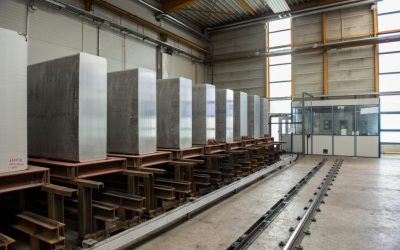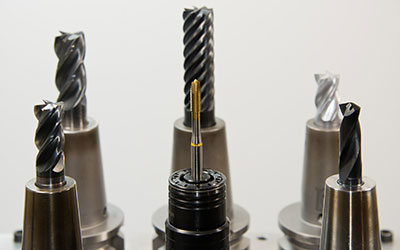Aluminum does not rust – right ?
The use of aluminum has many advantages.
However, an advantage mistakenly attributed to aluminum is that it does not rust.
When using our materials, it is therefore useful to take precautions to prevent or minimize corrosion.
Wat is a corrosion?
Like any metal, aluminum forms a natural oxide layer when it comes into contact with oxygen. In contrast to steel, the corrosive layer comes to a halt after approximately 2.5-4 nm, thus protecting the underlying metal from corrosive destruction. This layer remains stable in the pH range of 4.5 to 8.5, which means that it is not attacked by corrosive gaseous or liquid media. In this state, aluminum has clear advantages over steel.
Contact corrosion
During construction and in various applications with untreated aluminum semi-finished products, care must be taken to avoid contact corrosion. At contact points with more noble metals such as iron and copper, a contact element can form after the ingress of moisture, i.e. a low electrical voltage, under the chemical effect of which the aluminum is attacked.
The most important tips to avoid aluminum corrosion:
- do not bring into contact with materials having an electrochemical voltage potential of > 50 mV
- avoid contact with media outside the pH range of 4.5 to 8.5
- seal crevices ≤0. 5 mm (connected to component)
- do not allow moist parts to come into contact with steel, copper, brass or bronze
- avoid direct contact of parts when stacked vertically
- always use interlayers that are completely dry and free of acid residues
- do not store parts directly on wet or contaminated wood (e.g. pallets)
- never use rags that have been previously used to clean/dry steel, brass, copper, etc. or that are dirty
- never use abrasives (pads paper, etc.) with which other metals have been previously processed
- process only a single material on the machine. If you do change, however, then change the emulsion beforehand.
- even the most elaborate filtration systems cannot separate finest foreign metal particles
- immediately remove machined components and clean and dry them thoroughly
- use only cooling emulsions with a pH range between 4.5 to 8.5
- perform weekly check of pH value of the emulsion
- do not use cleaners with a pH value >8.5
- do not store aluminum in areas with changing climatic conditions
Opportunities for improvement:
Aluminum products can be specifically protected against corrosion by strengthening the oxide layer through anodizing or surface treatments such as painting. During anodizing, the sealing oxide layer is created artificially. It protects the aluminum from reacting with water and seals it airtight.
In addition, the aluminum can be protected from corrosion by changing the alloy. Just a few percent magnesium make it seawater-resistant and therefore suitable for shipbuilding.
With G.AL® C250 Elox Plus, GLEICH Aluminum has a product made from the alloy EN AW-5083, which has been optimized for optical requirements after anodizing (anodizing).
other topics …….
Heat treatment of aluminum
GLEICH Aluminium is one of the few manufacturers of aluminum cast plates with an in-house heat treatment facility.
But what actually happens during the heat treatment process and why it is necessary?
Frustration when producing threads
It doesn’t have to be so difficult!
By using a process that is aligned to the specific material, durable external and internal threads can be produced in a flash.


